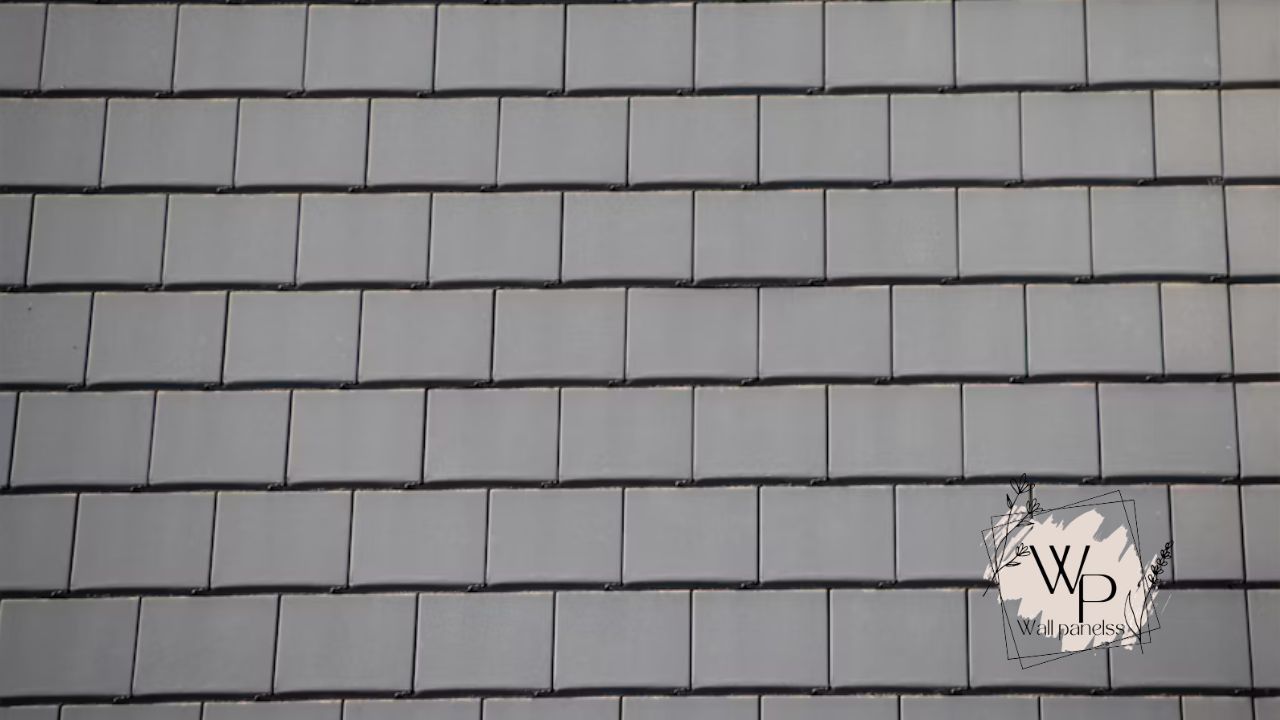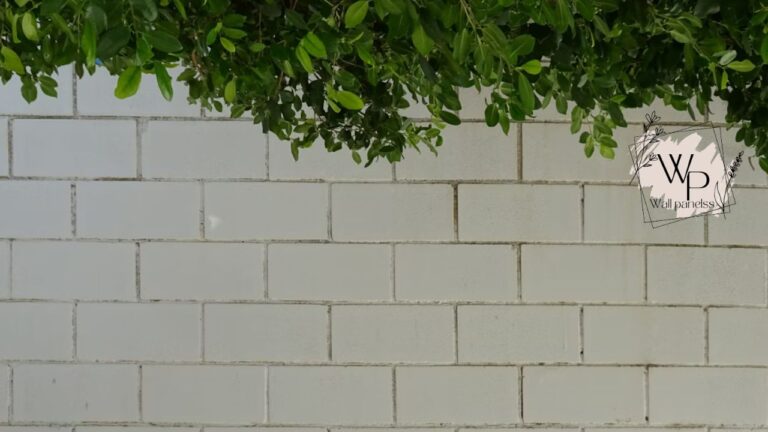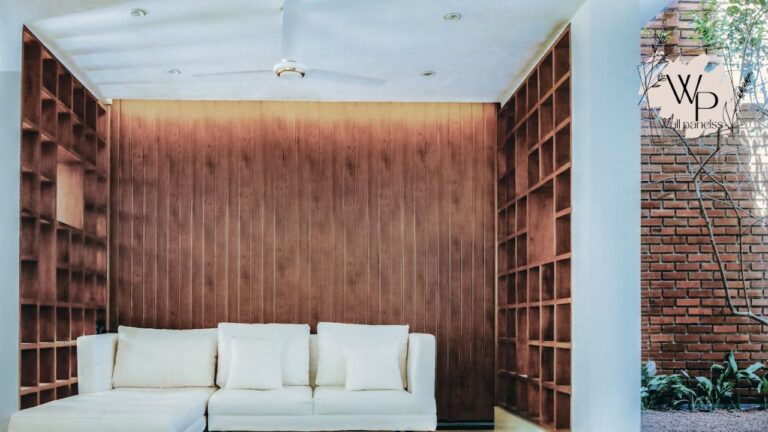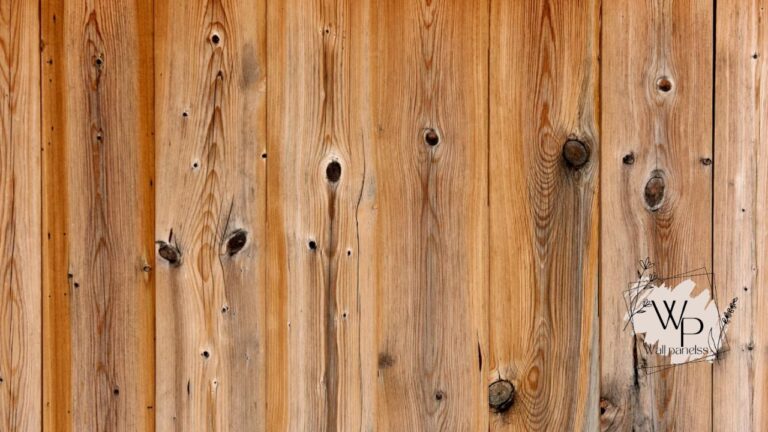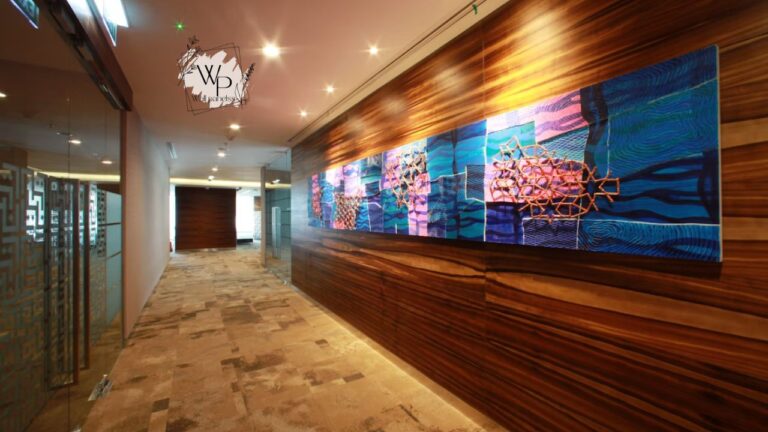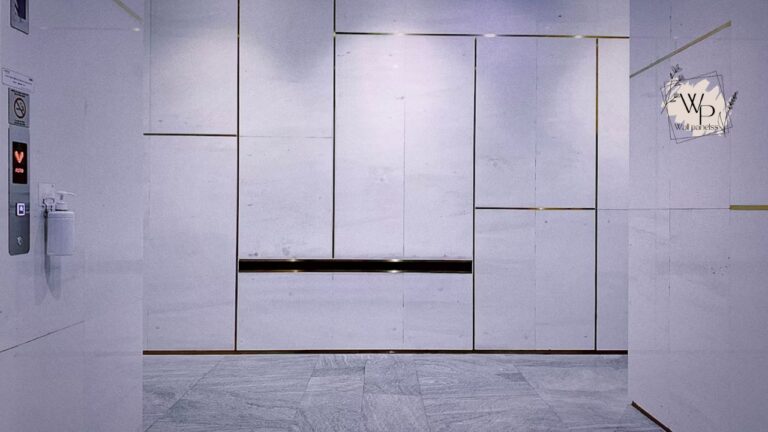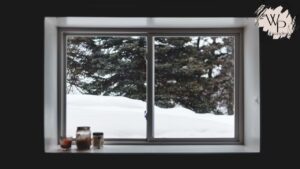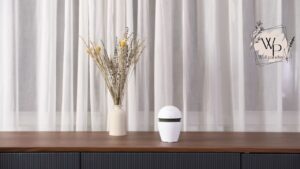Tired of staring at dull, uninspired walls? Imagine transforming your space with a stylish, durable, and incredibly affordable solution. A PVC tiles wall might be the game-changing upgrade you’ve been searching for, offering a perfect blend of aesthetic appeal and practical functionality. This versatile material is rapidly gaining popularity for good reason.
Whether you’re tackling a home renovation project or looking for a quick and impactful refresh, PVC wall tiles present a world of possibilities. They are no longer just for commercial spaces; modern designs have brought them firmly into our homes, from stunning kitchen backsplashes to elegant bathroom feature walls. This guide will walk you through everything you need to know about this fantastic wall covering.
PVC Tiles Wall: A Quick Overview
Before we dive deep, let’s look at a quick summary of what makes a PVC tiles wall such a compelling choice for modern interiors.
| Feature | Description |
|---|---|
| Material | Polyvinyl Chloride (PVC) – a lightweight, durable plastic. |
| Primary Use | Wall covering for residential and commercial spaces. |
| Key Benefits | Waterproof, durable, easy to install, low maintenance, budget-friendly. |
| Design Variety | Huge range of colors, patterns, and textures (e.g., wood, stone, marble). |
| Installation | Often DIY-friendly using adhesive; peel-and-stick options available. |
| Average Cost | Generally lower than traditional ceramic, stone, or wood paneling. |
| Common Areas | Bathrooms, kitchens, laundry rooms, basements, feature walls. |
What Exactly Are PVC Wall Tiles?
At its core, a PVC tiles wall is a surface covered with tiles made from Polyvinyl Chloride, a robust and versatile type of plastic. You might know PVC from its use in pipes and flooring, but its application in wall design is where things get truly exciting. These tiles are engineered to be both beautiful and tough.
Unlike traditional materials that can be heavy, porous, and difficult to install, PVC tiles are lightweight and inherently resistant to water. This makes them a dream come true for moisture-prone areas like bathrooms and kitchens. Forget the headaches of cracked grout or water damage; a properly installed PVC tiles wall creates a seamless, protective barrier.
The manufacturing process allows for an almost endless variety of designs. Advanced printing technology can replicate the look of natural materials like marble, slate, wood, and brick with stunning accuracy. You can achieve a high-end look without the high-end price tag or the demanding upkeep.
Why Everyone Is Talking About PVC Tiles for Walls
The buzz around PVC wall solutions isn’t just hype. Homeowners and designers are falling in love with the sheer practicality and aesthetic freedom they offer. Let’s explore the powerful benefits that make this material a top contender for your next project.
Unbeatable Water Resistance
One of the most significant advantages of a PVC tiles wall is its complete impermeability to water. The material itself is non-porous, meaning water simply cannot seep through it. This is a massive win for wet areas.
- Bathrooms: Say goodbye to worries about shower splashes damaging your drywall. A PVC tiles wall provides a waterproof shield.
- Kitchens: Spills and splatters from cooking are no match for PVC. A quick wipe is all it takes to clean up.
- Basements & Laundry Rooms: These areas are often prone to dampness. PVC tiles prevent moisture from turning into a bigger problem like mold or mildew.
A Surprisingly Durable Choice
Don’t let the lightweight nature of PVC fool you. These tiles are incredibly durable and built to withstand the rigors of daily life. They are resistant to scratches, dents, and fading, ensuring your walls look fantastic for years to come.
Unlike painted walls that can get scuffed easily or wallpaper that can peel, a PVC tiles wall maintains its integrity. This resilience makes it a smart long-term investment, saving you from the hassle and cost of frequent repairs or replacements.
Installation That’s Actually DIY-Friendly
Many home improvement projects feel daunting, often requiring specialized tools and professional expertise. This is where PVC tiles truly shine. Their lightweight design and simple installation methods make them accessible to even novice DIYers.
Most PVC wall tiles are installed using a straightforward adhesive application. Some modern options are even simpler, featuring a peel-and-stick backing. You can dramatically transform a room in a single weekend without the mess and expense of hiring a contractor. This ease of installation is a huge factor in the growing popularity of PVC tiles wall systems.
Maintenance? What Maintenance?
If you despise cleaning, you’ll adore having a PVC tiles wall. The smooth, non-porous surface is incredibly easy to maintain. There’s no grout to scrub and no special cleaners required.
A simple wipe-down with a damp cloth and mild soap is usually all that’s needed to keep your walls looking pristine. This low-maintenance quality is a huge relief for busy households, freeing up your time for more important things.
Hearing from the Homeowners: Reviews and Ratings
Real-world experience is the best testament to a product’s quality. Across home improvement forums and retailer websites, the feedback on using PVC tiles for walls is overwhelmingly positive.
User Review Spotlight: The Bathroom Makeover
“I was skeptical about a PVC tiles wall for my bathroom remodel. I wanted the look of marble but dreaded the cost and upkeep. I found these incredible PVC panels that looked just like Calacatta marble. The installation was a breeze—my husband and I did it ourselves in a day! It’s been a year, and they still look brand new. No mold, no fuss. I’m a total convert.”
⭐⭐⭐⭐⭐ – Sarah K., Homeowner
User Review Spotlight: The Kitchen Backsplash
“Our old tile backsplash was a nightmare to clean, especially the grout behind the stove. We replaced it with a sleek, metallic-finish PVC tiles wall. The difference is night and day. It looks so modern, and cleaning up grease splatters takes seconds. A fantastic and affordable upgrade that made a huge impact.”
⭐⭐⭐⭐⭐ – Mark T., DIY Enthusiast
Of course, no product is perfect. Some users note that while durable, the tiles can be damaged by sharp objects if significant force is applied. Others mention the importance of proper wall preparation to ensure the adhesive sticks correctly. However, the consensus is clear: for the price, durability, and aesthetics, a PVC tiles wall is an outstanding value.
Exploring the Stunning Design Possibilities
The creative freedom you get with PVC wall tiles is one of their most exciting features. The days of limited, plastic-looking options are long gone. Today’s market is flooded with sophisticated and stylish choices.
Realistic Natural Textures
Modern printing and embossing technologies create PVC tiles that are virtually indistinguishable from their natural counterparts.
- Wood Grains: Achieve the warm, rustic look of shiplap or reclaimed wood without worrying about water damage or termites. A PVC tiles wall with a wood effect is perfect for creating a cozy feature wall in a living room or bedroom.
- Stone and Marble: Get the luxurious feel of a marble-clad bathroom or a slate feature wall for a fraction of the cost. These designs add a touch of timeless elegance to any space.
- Brick and Concrete: Industrial and loft-style interiors are more popular than ever. A faux brick or concrete PVC tiles wall can create that edgy, urban aesthetic without the weight and complexity of installing real masonry.
Bold Colors and Geometric Patterns
If you prefer a more contemporary or vibrant look, PVC tiles have you covered. They are available in a vast spectrum of solid colors, from muted neutrals to bold, statement-making hues.
Geometric patterns are another area where PVC excels. From classic subway tile layouts to intricate mosaics and 3D textured designs, you can create a visually dynamic surface that becomes the focal point of the room. A geometric PVC tiles wall is a fantastic way to inject personality and modern flair into your home.
The Minds Behind the Material: Innovators in PVC Design
While PVC itself is not a new invention, its application as a high-end design material is the result of visionary companies and designers. Brands like Dumaplast and Grosfillex have been pioneers in the field, investing heavily in R&D to push the boundaries of what a PVC tiles wall can look like.
These companies understood that for PVC to succeed against traditional materials, it had to overcome the stigma of being a “cheap plastic.” They focused on perfecting high-definition printing and creating realistic textures that appeal to discerning homeowners and interior designers.
For instance, some boutique firms now specialize in custom-printed PVC tiles wall murals, allowing customers to turn a personal photograph or a piece of digital art into a stunning, full-wall feature. This level of customization is a testament to how far the technology has come.
Step-by-Step Guide: Installing Your PVC Tiles Wall
Ready to take on the project yourself? Installing a PVC tiles wall is a manageable DIY task. Following these steps will help ensure a professional-looking result.
Step 1: Gather Your Tools and Materials
Before you begin, make sure you have everything you need.
- PVC wall tiles
- Measuring tape
- Level
- Utility knife or fine-toothed saw
- Caulking gun and recommended adhesive
- Silicone sealant (for edges and corners in wet areas)
- Cleaning cloths and a degreasing cleaner
Step 2: Prepare the Wall Surface
This is the most crucial step for a long-lasting installation. The wall must be clean, dry, and smooth.
- Clean: Use a degreasing cleaner to remove any dust, grease, or grime.
- Dry: Ensure the wall is completely dry before you start applying adhesive.
- Smooth: Fill any cracks or holes with spackle and sand them smooth. If the wall is heavily textured, you may need to skim-coat it or install a thin layer of backer board.
A poorly prepared surface can cause the adhesive to fail, so don’t rush this part. A successful PVC tiles wall depends on a solid foundation.
Step 3: Plan Your Layout
Measure the wall and lay out your tiles on the floor to visualize the pattern. It’s wise to start your first row in the center of the wall and work your way out. This ensures that any cut tiles at the edges will be of equal size, creating a balanced, symmetrical look. Use your level to draw a straight guideline for the first row.
Step 4: Cut Your Tiles
You will inevitably need to cut tiles to fit around corners, outlets, and the edges of the wall. For straight cuts, a sharp utility knife works well. Score the tile firmly and then snap it along the line. For more complex cuts, a fine-toothed saw or a jigsaw can be used. Measure twice, cut once!
Step 5: Apply Adhesive and Install the Tiles
Following the manufacturer’s instructions, apply the adhesive to the back of the tile or directly onto the wall. Press the tile firmly into place, ensuring it aligns with your guideline. Use a cloth to wipe away any excess adhesive that squeezes out from the edges. Continue this process, fitting the tiles together according to their design (e.g., tongue-and-groove or interlocking edges).
Step 6: Finishing Touches
Once all the tiles are in place, the final step is to seal the edges. Apply a bead of silicone sealant along the perimeter of your PVC tiles wall, as well as in any corners. This is especially important in bathrooms and kitchens to create a completely waterproof barrier.
Comparing PVC to Other Wall Coverings
How does a PVC tiles wall stack up against more traditional options? Let’s break it down.
| Material | Cost | Installation | Durability | Maintenance |
|---|---|---|---|---|
| PVC Tiles | Low to Medium | DIY-Friendly | High | Very Low |
| Ceramic/Porcelain Tiles | Medium to High | Professional | Very High | Low (grout needs care) |
| Paint | Low | DIY-Friendly | Low to Medium | Medium (needs touch-ups) |
| Wallpaper | Low to High | DIY/Professional | Low | Medium (can peel/stain) |
| Wood Paneling | High | Professional | Medium | High (can warp/rot) |
As you can see, a PVC tiles wall offers a unique combination of low cost, easy installation, and high performance that is hard to beat. While ceramic tile may be slightly more durable against extreme impact, the overall value proposition of PVC is incredibly strong.
Frequently Asked Questions (FAQs)
1. Is a PVC tiles wall a good idea for a shower?
Absolutely! This is one of its best applications. Because PVC is 100% waterproof, it’s an ideal material for shower enclosures. Just be sure to seal all edges and seams properly with silicone to prevent any water from getting behind the panels.
2. Do PVC wall tiles look cheap or plasticky?
This was a concern with older versions, but modern, high-quality PVC tiles are a world away from that. With high-definition printing and realistic textures, they can convincingly mimic materials like stone, wood, and ceramic. The key is to choose a reputable brand.
3. How long does a PVC tiles wall last?
With proper installation and normal residential use, a good quality PVC tiles wall can easily last 15-20 years or even longer. Its resistance to water, stains, and fading makes it a very durable and long-lasting choice.
4. Can I install PVC tiles over existing ceramic tiles?
Yes, in many cases, you can. The existing tile surface must be level, clean, and in good condition. You’ll need to use a strong, suitable adhesive. Installing over old tiles can save you a tremendous amount of time and mess from demolition.
5. Are PVC wall tiles environmentally friendly?
The environmental impact of PVC is a complex topic. While it is a plastic derived from fossil fuels, its durability and long lifespan mean it doesn’t need to be replaced often. Additionally, many PVC products are now recyclable. Look for manufacturers that have recycling programs or use recycled content in their products.
6. How do I clean my PVC tiles wall?
Cleaning is incredibly simple. Use a soft cloth or sponge with water and a mild, non-abrasive cleaner. Avoid using harsh chemicals, scouring pads, or abrasive powders, as they can scratch or dull the surface of your beautiful PVC tiles wall.
Admin Recommendation
WallPanel Home Assistant Idle: The Ultimate Guide to Smart Home Displays

